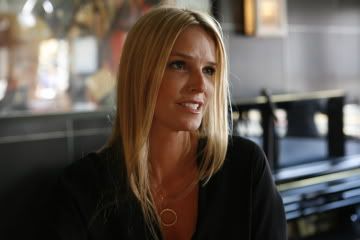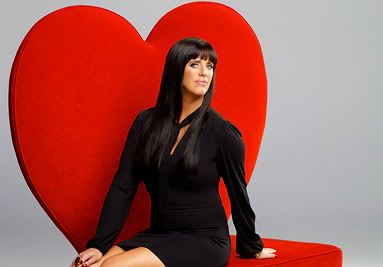Perhaps I'm the lone cynic amongst my reality-starved fellow bloggers, but I am of the firm belief that there is no dearth of crappy reality TV. It's not so much the boring cliches, nor the insultingly aggrandized stereotypes, nor the despicable motivations that turn me off. It's the fact that I have different standards for TV shows. I watch TV not for gripping real-life drama or "moments of authenticity," but instead for fantastical, impossible situations that feed my delusions of self-grandeur and help me escape the mundaneness of everyday life. It seems, lamentably, as if my preferences are incapable of intersecting with reality culture offerings.
Not true. Luckily, in this day and age of reality overload, there exists a fix for folks like myself.
Rob Dyrdek's Fantasy Factory, one of MTV's newest "reality" offerings, is a reality show in the sense that it chronicles the daily struggles of a man with a job and everyday interactions. But it's fantasy in that the protagonist - Mr. Rob Dyrdek - assumes a lofty title that likely nobody else will ever claim: "skater/entrepreneur." For his obligations to be called a "mere" job would be fantasy to any normal mortal being.

It's reality in the sense that it chronicles his dramatic interactions with friends and family. But it's fantasy in that these daily interactions are with colorful characters such as Drama (his meek wannabe cousin/assistant whom Rob routinely hassles), Chanel (his cute, freestyle-rappin' receptionist), Jeremy (his no-nonsense manager whose sternness comically contrasts with Rob's silliness), and his adorable puppies Meaty and Beefy. Though these side characters have abundant charm and personality of their own, they find themselves consistently overshadowed by the sheer charisma and testosterone-fueled antics of Rob Dyrdek and his wondrous "Fantasy Factory."
But what's the deal with this alleged "Fantasy Factory," the other half of the title? Is it really as awe-inspiring as it sounds?
Arguably so. The "fantasy factory" refers to the second protagonist of the show: a giant warehouse of goodies that would render the pants of any fun-lovin' soul wet with glee. It is a giant factory where, as Dyrdek puts it, "dreams are made," boasting such luxuries as a giant foam pit, an indoor skate park and "super blob," a T-Rex car, a tennis-ball-powered mobile gun and zipline. Among
other novelties. It is the vehicle through which Rob Dyrdek delivers his fantastical ideas, and it is the means by which he can exercise his knack for "extreme ventures" and thereby solidify his name and brand. Think the grandiose self-promotion and ego of Donald Trump in
The Apprentice, but with a tinge less dickishness and instead of boring, contrived business affairs, Mr. Rob Dyrdek needs to worry about such pressing business matters as:
- Setting the world record for fastest land-speed for a skateboarder
- Building the largest skateboard in the world
- Getting attacked by a swarm of sharks to promote his new line of action figures
- Dancing in a Carl's Jr. star outfit to promote his new skate park
- Establishing a string of motels with the Dyrdek name
- Gathering actors to star in his own, self-filmed music video
Observe:
As can be seen, for the easily-amused among us, there's a variety of pain-derived laughter á la
Jackass. People get hurt, most of them innocent bystanders, and most of them at the hands of Mr. Rob Dyrdek. But realize the stunts aren't the centerpiece of the show, nor even are Dyrdek's ridiculous enterprise ventures. No, Mr. Rob Dyrdek himself is the force that keeps the show consistently fresh. He is the ideal reality character; eager to flaunt his domineering side, hungry to live the life of excess, but at the same time willing to accommodate the quirks of his supporting cast. He is a "bro" in the truest sense of the word, and his idyllic lifestyle is one any sane human being should envy and aspire to fulfill.

Indeed, the true appeal of Rob Dyrdek's antics, I believe, lies in its authentic representation of the American Dream. That may sound like high praise for a show that features Dyrdek smoking hardened dog poo like a fine cigar, but bear with me. Here's a gentleman who pursued his dream profession - one that society conditions us to consider unsustainable - and managed to generate for himself an (anything but) modest living. He builds his renown in small part by pandering to corporate fat-cats, albeit, but he does so in a way that remains true to his deeply-rooted skater identity. The Dream isn't about a comfortable lifestyle, with a loving wife, steady job and (god forbid)
children. Baloney. No, The Dream is about bro-ing it up, doing what feels right, having no regard for practicality or formality, taking no s@*# from nobody, and somehow letting this mindset rake in obscene amounts of money for yourself. If
Rob Dyrdek's Fantasy Factory isn't the premier manifestation of The Dream, then I don't know what is.
Other than a startlingly high recycled-footage-to-fresh-footage ratio (one best-of episode and one unseen footage episode, both within a 12-episode season), this show packs more situational gold nuggets per episode than a primetime sitcom. Not bad for unscripted. More importantly, though, it reinforces a real representation of a very fictional and far-removed ideal: follow your passion, and your life will be set. If you want stale drama and overdone catfights, then go elsewhere. As the show's title theme asserts, "Forget all that you see / It's not reality / it's a fantasy / Life is just a fantasy." Yes, it may be fantasy, but by god, that's what makes it the best reality program on TV.
-Matin
































